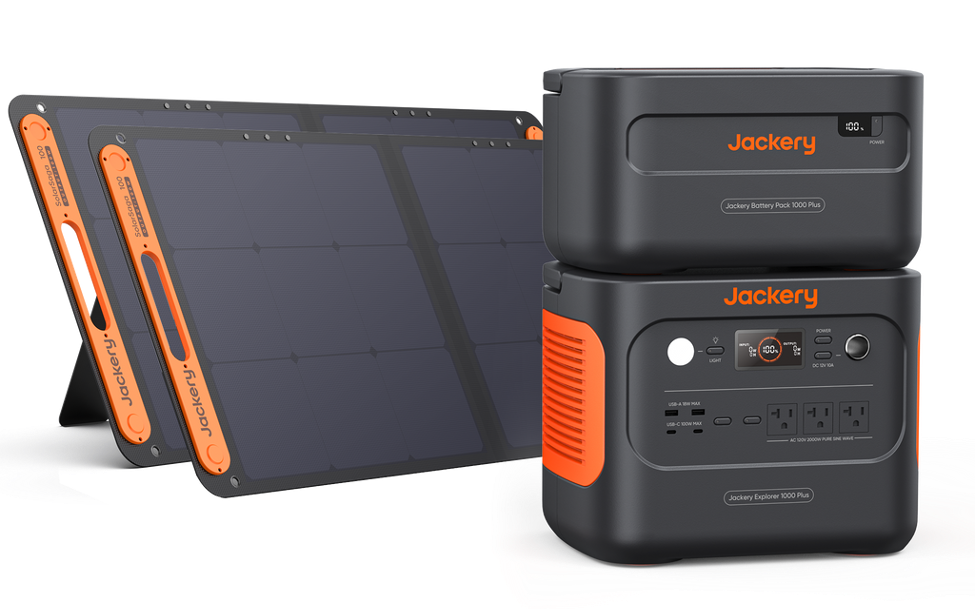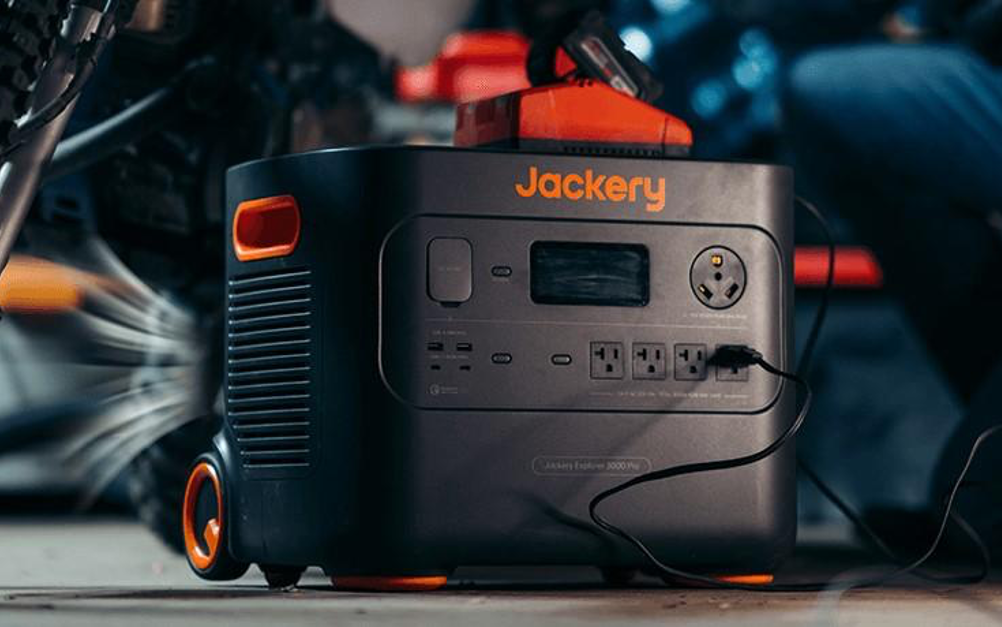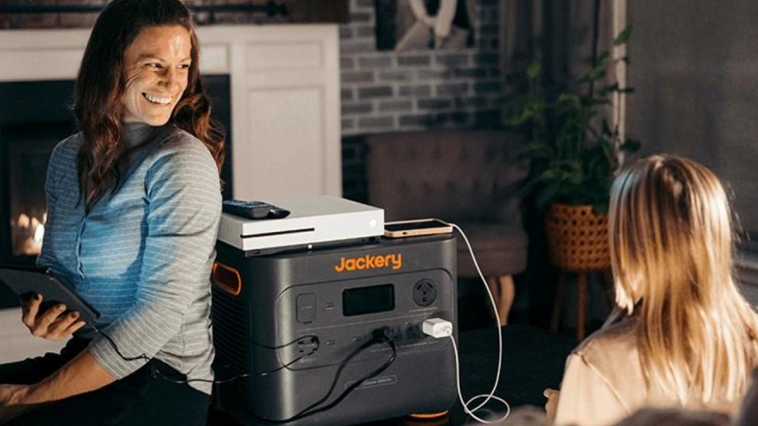This is a must-read if you’re one of the smart cookies who invested in a portable generator to keep your devices juiced up anywhere, anytime. These nifty little units are lifesavers when you’re off-grid exploring the great outdoors or stuck at home during power outages.
But here’s the thing – they are costly, you know? So, you’ll want to take good care of your portable generator to ensure it keeps kicking for years and years without any hiccups. Proper maintenance is crucial to making that hefty investment pay off in the long term.
That’s why I’m sliding into your inbox today. I’m about to lay out the entire game plan for keeping your portable generator safe and sound when not in use. Follow these simple tips, and you won’t have to worry about weather damage, dead batteries, or any other gremlins messing up your portable power flow.
Prepping for Storage of Portable Generator
Okay, before we get into the nitty-gritty storage, you must first handle a couple of prep tasks. It’s like doing the dishes before you leave the house – just some basic cleaning up to ensure everything’s ship-shape when packed away:
- Cleaning
First, grab a clean microfiber cloth and wipe down your portable generator’s solar panels and the portable power stations. Get rid of any dirt, grime, bird droppings, or who knows what else accumulated during your last adventure. You want those panels gleaming clean without any gunk obstructing the sun’s rays.
- Inspection
Next, do a complete visual once-over of the whole unit – panels, generator casing, cables; you name it. Check for any worrying signs of physical damage like cracks, moisture ingress, or other degradation. If something seems off, make a note and address it before storage.
- Charging
Ensure your portable generator’s battery bank is topped up to 100% charged capacity. Storing it with a depleted battery is just asking for a dead paperweight whenever you go to unpack it again. Running those batteries down to zero is a surefire way to accelerate their aging, too.
With those basic due diligence tasks checked off the list, your portable generator should be primed and ready to put into its temporary hibernation slumber. But where exactly should you be stashing it away?
Selection of Storage Environment
This part is crucial – where you decide to store your portable solar generator can directly make or break its lifespan if you need to be more careful. These units are designed to be tough cookies that can handle rugged outdoor conditions—but allowing one to sit stagnant for months in a crummy environment? That’s a recipe for disaster.
So when scoping storage spots, keep these main factors in mind:
- Dryness: Above all else, you want an area that’s dry, dry, and dry with good airflow to allow any small amount of condensation to evaporate quickly. Moisture buildup is the silent killer for portable generators, eventually leading to corrosion, electrical shorts, and total power failure over time.
- Avoid Direct Sunlight: On the flip side, housing your portable generator somewhere with constant direct sun exposure is a no-go, too. That intense UV radiation degrades plastic components and can cook electronics over months of relentless beating. Always opt for a shady spot out of those harsh rays.
- Avoid High Temps: Stupidly high temperatures are also to be avoided for obvious reasons. Keeping your portable generator baking in a hot shed or attic all summer is just begging for batteries to swell up, electronics to warp, and general expedited aging.
Assuming a nice, climate-controlled indoor area is challenging, at least target somewhere shielded from excessive heat and sun, plus fans or vents to keep the air circulating and whisk away humid conditions. An insulated, well-ventilated basement or garage cubby could work nicely. Just apply some AC when needed for temp regulation.
Once you’ve picked out that Goldilocks storage spot – not too hot, not too cold, just the right amount of dryness – it’s time to batten down the hatches and protect it from any remaining threats.

Protective Measures for Stored Portable Solar Generator
Wherever you choose for storage, you’ll want to take some precautionary measures to protect your portable generator from any lingering dust, pests, sun exposure, or rogue moisture sources. A quick checklist:
- Sunshades or Waterproof Covers: If housing it underneath an eave or in the garage, invest in a heavy-duty waterproof generator cover or shade tent to fully enclose the unit. This shielding adds an extra defense against rain, morning dew, or punishing sun angles throughout the day.
- Covering the Equipment: Stowing it in a basement or shed? Use thick plastic sheeting, a snug canvas tarp, or even an old bedsheet to drape fully over the portable generator. This prevents dust buildup on the panels and interior components that could obstruct airflow and impair performance.
- Regular Inspection: Here’s where discipline comes into play – commit to a recurring monthly or quarterly inspection schedule. Uncover the portable generator, wipe away any unexpected gunk, and check for cable damage or battery drain. A few minutes of eyeballing every few months lets you catch little issues before they snowball.
You want to strike that perfect balance – fortified against the elements, yet easy to peek in on occasionally to ensure everything’s still in good order. Those few simple measures will help your portable generator earn its keep and be ready to tackle any juice-needing tasks whenever you are.
What if you plan on adequately hibernating your solar generator for a house longer than a few months? In that case, we have to level up the longevity protocols.
Long-Term Storage and Protection Considerations
While a season or two stored away isn’t too crazy, leaving any portable solar generator system untouched for a year or more starts pushing tolerances. Like your car battery, those lithium cells providing power can’t hold a full charge indefinitely – they’ll slowly discharge over time, even when unplugged.
Mother Nature’s harsh impacts on the generator’s broader components never stop. Tiny leaks of moisture could start corroding terminals. Mice might decide to get cozy and gnaw on things. Searing summer heatwaves could bloat up those batteries until they’re unusable.
The bottom line is that leaving your portable generator in extended storage without maintenance is just negligent and reduces its lifespan by years.
There are some long-term babysitting tactics for your generator for house emergencies:
- Regular Charging: Depending on climate conditions, you’ll likely need to retrieve your portable generator every 3-6 months and run a complete recharge cycle. Invest in a primary $20 battery tender to regulate the charge without overloading those cells if needed. This resets the clock on their gradual discharge cycle.
- Regular Cleaning: Take a few extra minutes for a deeper cleaning during your recharge sessions. Use compressed air to blast out any dust bunnies from vents and crevices. If needed, check for any evidence of critter invasion and clean affected areas with a disinfectant solution.
- Regular Inspection: Like our interim inspections, you’ll want to fire up the generator and run it under load for 30-60 minutes, too. This ensures all components are still functioning as they should under stress. Catch issues before they become problems!
Sure, this long-term maintenance schedule adds more work to your plate. But think of it like changing your car’s oil – this easy preventative upkeep prevents you from getting stranded with a wholly shot generator down the road. An hour of cleaning and charging every six months keeps it going for 5, 10, or even 15 more years!
You’ve invested good money into this portable power convenience. So take care of your gear, and it’ll take care of you in return for adventures untold. Enough preaching, though – let’s look at a specific generator model whose durable build lends itself well to low-maintenance, worry-free longevity…

Jackery Solar Generator 3000 Pro and 1000 Plus
When evaluating portable solar generators comfortable being left in extended storage situations, it’s hard to overlook the tanks that Jackery cranks out. Built for consistent reliability in any conditions, their units routinely rate at the top for hardy longevity:
Efficient Charging: Jackery’s solar generator models, like the 3000 Pro, leverage advanced MPPT technology to slurp up every available photon when plugged into their SolarSaga solar panels. This facilitates way faster recharging than cheaper rigs – as little as 6-7.5 hours with 6 Jackery SolarSaga 100W Solar Panel to fully top up that mammoth 3024Wh capacity from the sun alone! Less waiting around for your power.
Versatile Output Ports: Need to plug in a CPAP machine? How about electricity-hungry power tools? The versatility of multiple AC outlets, USB ports, and even a heavy-duty 12V terminal means your options are wide open. The 3000 Pro’s 3200W pure sine wave output can reliably breathe life into just about any gear you own.
Reliability and Durability: More than just quick charging, though, Jackery over-engineered these portable generators for structural resilience, too. Reinforced casings with lifted air intakes prevent moisture from creeping in. The LiFePO4 battery of Jackery 1000 plus modules is designed for an industry-leading 4000 cycles to 70%+ capacity. Quality rubber gaskets plus intelligent BMS, over-voltage protection, and short circuit protection safeguard all sensitive components for years of hard use.
Comparing Jackery Solar Generator 3000 Pro and 1000 Plus:
So, if the portable solar generator lifestyle is calling you but the vulnerability of “seasonal” electronics has you hesitating, do yourself a favor – skip the basic models and spring for a Jackery for a reliable generator for power outages or a quiet generator for camping. Its quality difference shines when waiting out that long storage hibernation stretch between adventures.
But obviously, this is equipment that’ll eventually need to hibernate between expeditions. And since we’re talking about sensitive electronics and premium battery cells here, you have to be strategic about proper storage and protection protocols. Otherwise, neglect and laziness drain the lifespan out of that investment really quickly.
Conclusion
Well, there you have it, people – a foolproof game plan for not just surviving but thriving way off-grid or away from reliable power sources, all thanks to portable solar generators! These compact portable power stations redefine self-reliance and independence when camping, RV’ing, working remotely, or just soldiering through the next multi-day outage at home. Visit Jackery to find out more on
So, commit to those diligent upkeep practices we covered – prep it correctly, find the perfect stashing spot, create that all-weather shielding, and remember to cycle fresh charges/inspections while squirreled away long-term. It’s a super small effort that pays massive dividends in reliable performance down the road!




